Editor’s note: This post was originally published on Medium. These Portland, Oregon, examples illustrate a trend prevalent throughout North America in high-cost cities with too much zoning that allows only detached houses. Single-family zoning yields the worst possible outcome for affordability by effectively mandating that modest homes will be replaced by huge expensive ones, further raising the walls of economic exclusion.
Since January 2015, when the City of Portland started talking seriously about changing the rules for new homes in residential areas, the median price of a residential lot in the city has risen from $301,000 to $404,000.
The final three slides below show what the last three years have looked like to a middle-income homebuyer in Portland:
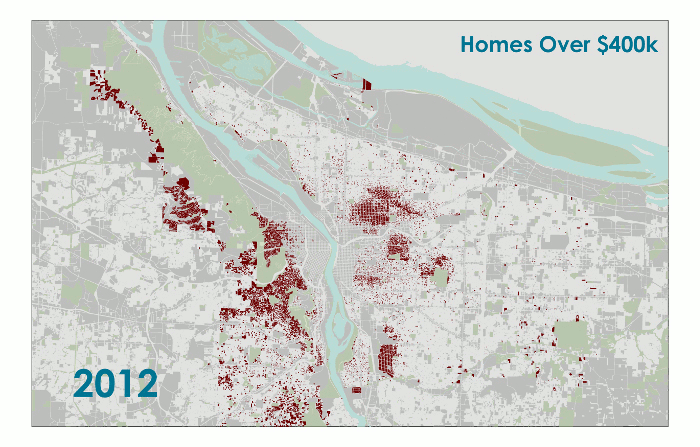
So what has the city done about this over the last three years?
The city spent 2015 and 2016 hammering out a compromise between people worried mostly about demolition and people worried mostly about rising prices. To reduce demolition, new rules would sharply lower maximum new home sizes. To increase and diversify housing citywide, the rules would undo parts of the 1959 ban on duplexes and internal divisions of large homes.
Neither side got everything they wanted, but there was consensus around one bit of common ground: During a housing crisis, it is dumb to spend half a million dollars to replace one house with one house.
In the closing weeks of 2016, the city council approved that concept and sent it back to city staff to hammer out details.
It’s been more than a year since. And something strange has happened: not much.
In the meantime, another 300 or so homes have been knocked down.
The city council isn’t currently expecting a final vote until late 2018
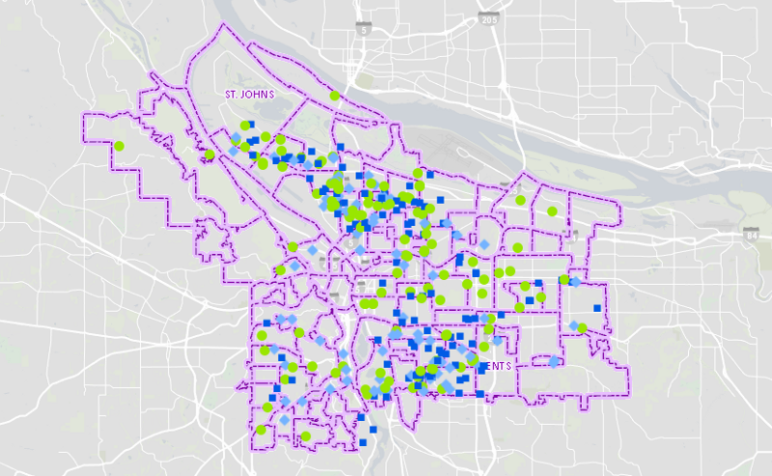
In October, after 10 months of internal work, the city planning staff released a “discussion draft” of its new infill code that would cap building sizes while allowing shared lots in more of the city.
Then there was another public comment period. This month, city staff will summarize those comments. Then they’ll revise their plan and bring it to the Planning and Sustainability Commission. The PSC will suggest more revisions before it finally goes to city council in — unless anyone decides to accelerate things— late 2018, two years after the council approved the basic concept and almost four years after debate began.
At this point, gathering public input is no longer the issue causing delay — it’s that the City of Portland is apparently content with the infill status quowhile its city council’s 2018 calendar fills in.
All the new homes below have been permitted and built during Portland’s residential infill debate so far
So what does the status quo of Portland’s infill policy — that is, the policy created in 1959 and still in effect — look like? It looks like this building, 5414 SE Taylor St. in Mount Tabor, valued at $379,180 in 2016…
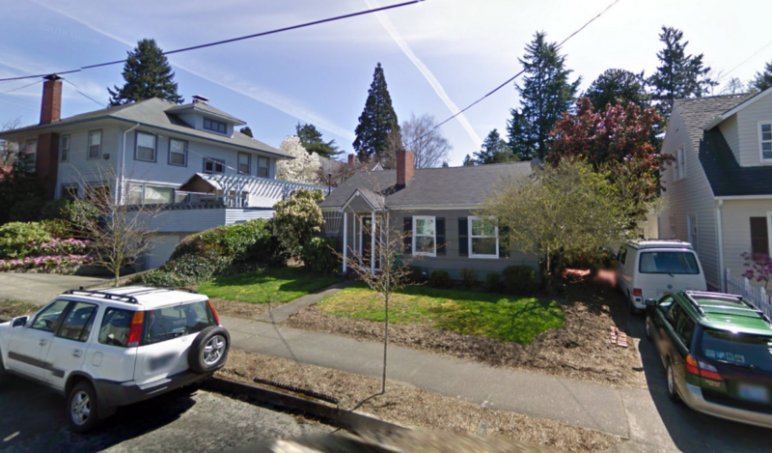
…being replaced not by a small duplex but by this one-family home, valued at $922,850 in 2017. The new building is about 50 percent bigger than a one- or two-unit building would be allowed to be under the proposed rules.
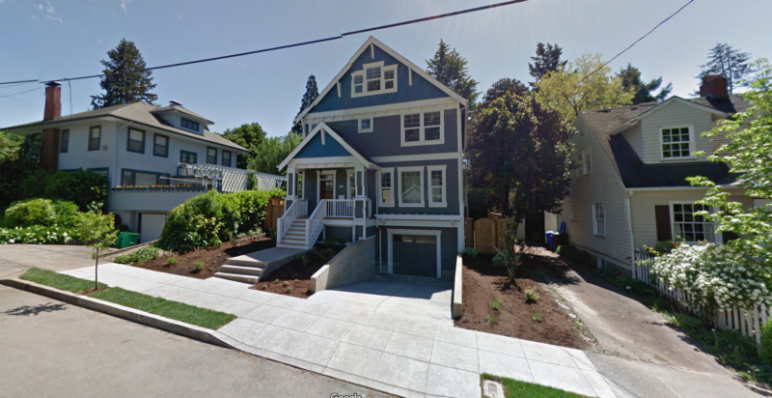
The status quo means this building, at 934 SE Rex St. in Sellwood, valued at $386,660 in 2016…
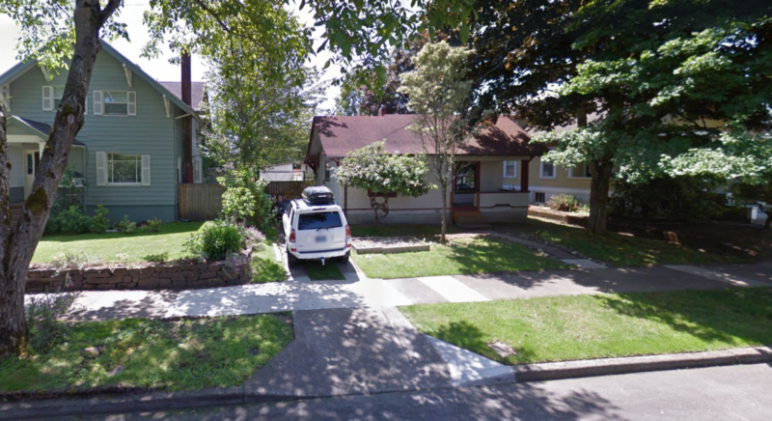
…being replaced not by a duplex with a backyard cottage but by this building, valued at $1.2 million in 2017. It’s about 25 percent bigger than would be allowed under the proposed rules.
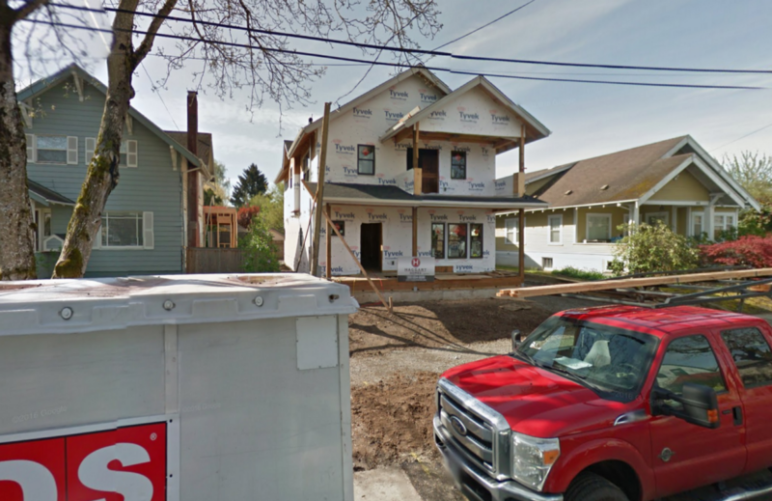
(The new building above also added an internal accessory cottage, but the proposed new rules would have allowed one attached cottage and one detached cottage, or a duplex plus a cottage … all of which would have been required to add up to less than the size of the building above.)
The infill status quo means this home at 2936 SE Grant St. in Richmond, valued at $424,820 in 2015…
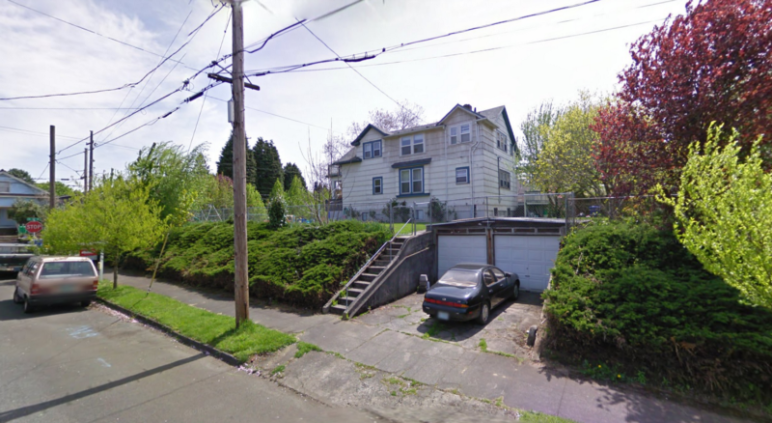
…being replaced not by a corner four-plex with an affordability requirement and two small midblock duplexes, but with this trio of single-family homes valued from $856,920 to $897,120 in 2017. The smallest of the three is 61 percent bigger than a one- or two-unit house could be under the new rules, and 24 percent bigger than a corner four-plex on the site could be.
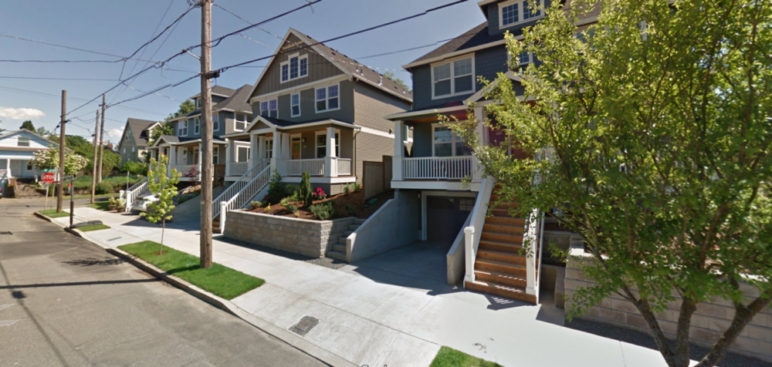
The infill status quo means this home at 4021 NE 7th Ave. in the King neighborhood, valued at $359,980 in 2016…
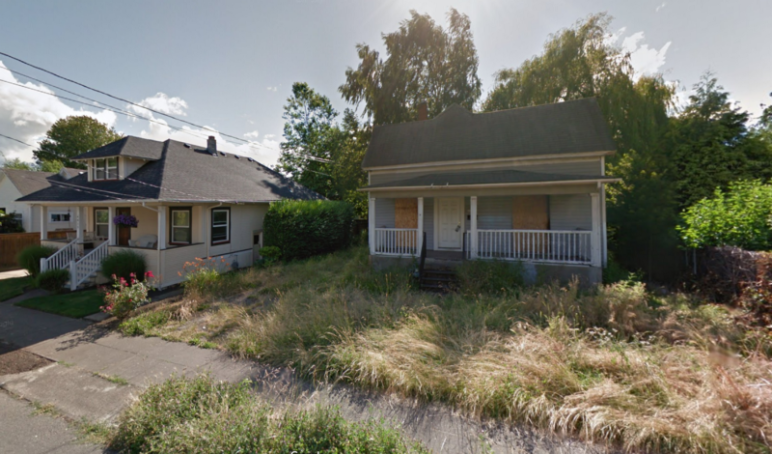
…being replaced by this duplex, the two sides valued at $667,630 and $690,600 respectively. Each side of the duplex is 63 percent larger than either could be under the proposed rules.
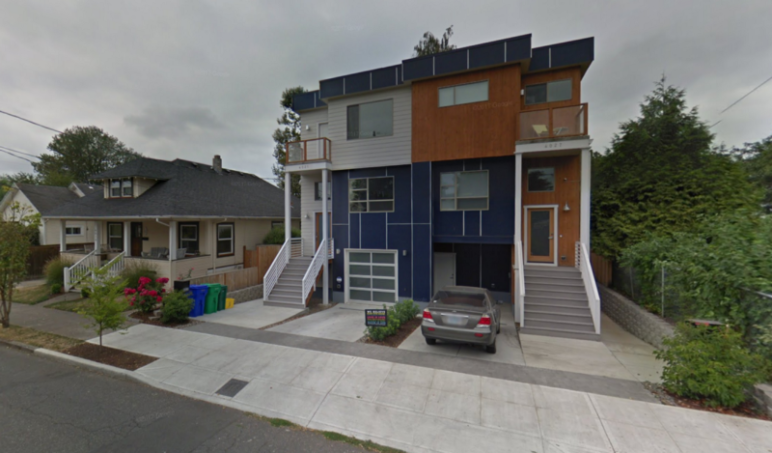
Then there’s this house, at 5335 SW Taylors Ferry Road in Ashcreek, currently valued at $297,430. Under the proposed rules, a new one or two-unit home here could only be about 300 square feet larger than the current building’s 1,413 square feet.
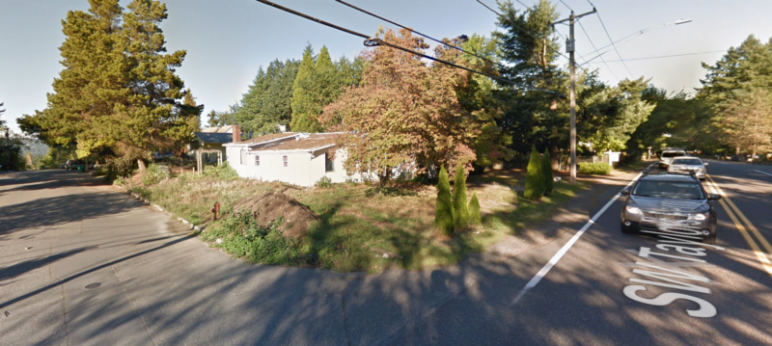
A building permit for a new one-family home that would be more than double this one’s size was placed under review for this address last Monday.
If the City of Portland wants homes like that one to be replaced by anything other than big single-family homes for rich people, it has to change its rules. The sooner those rules change, the fewer opportunities for middle-income Portlanders will be lost.
Portland for Everyone supports abundant, diverse, affordable housing. This blog is a reported effort to explore ways to get those things. You can learn how to influence the residential infill project here.
[list_signup_button button_text=”Like what you|apos;re reading? Get our latest housing research here.” form_title=”Housing Shortage Solutions” selected_lists='{“Housing Shortage Solutions”:”Housing Shortage Solutions”}’ align=”center”]


Comments are closed.